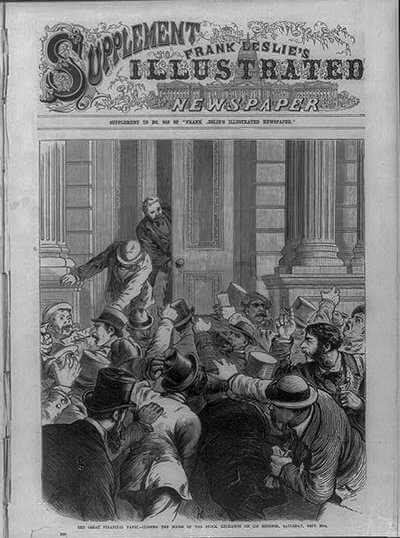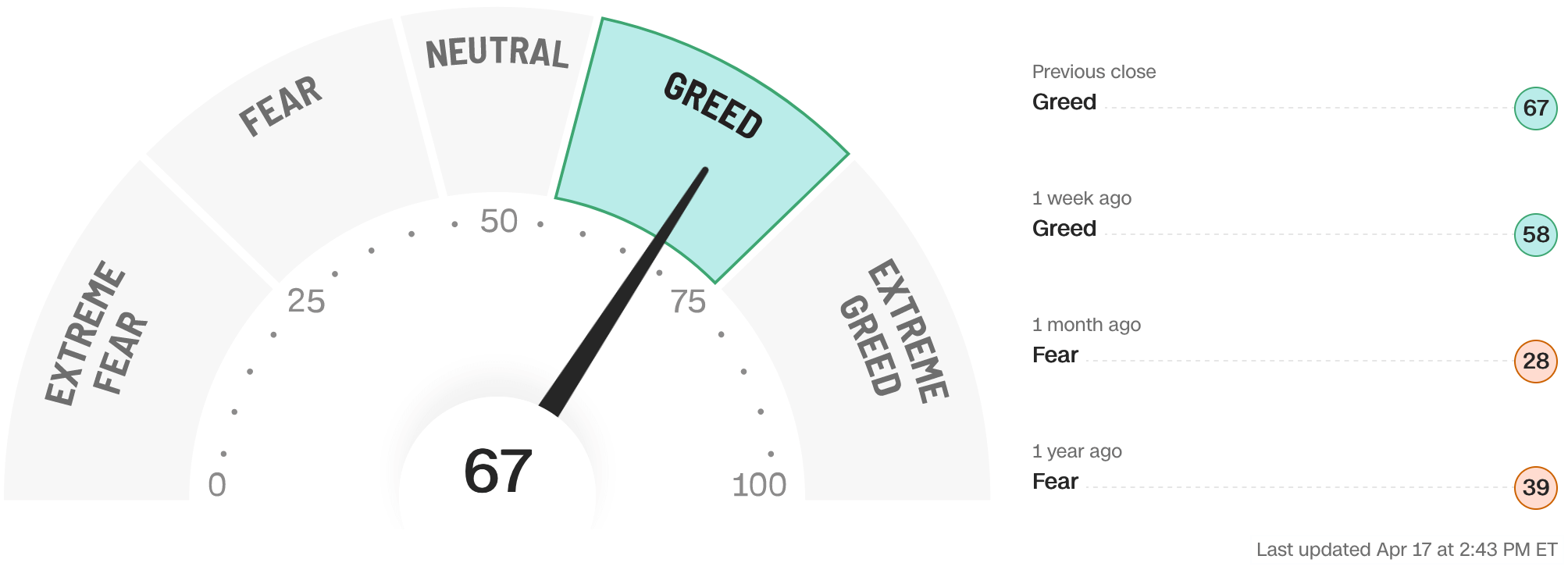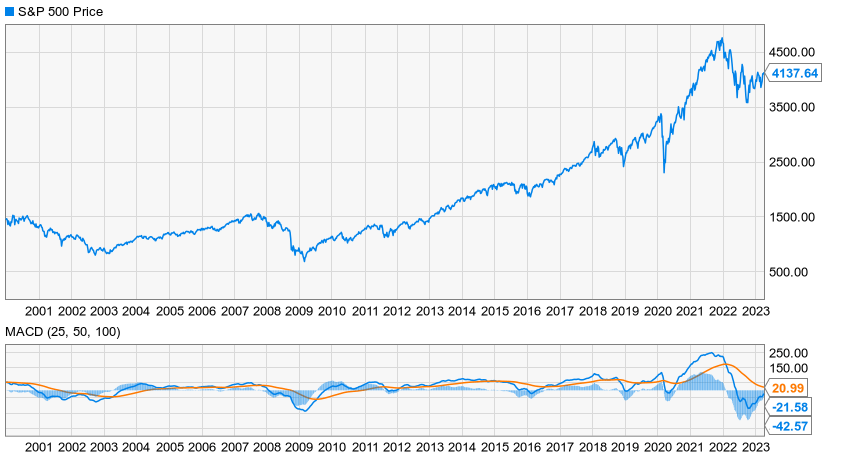Market Overview
This months models have been posted. There are NO CHANGES.
When the bank is overdrawn
Banks fail. No matter what guardrails we put in place, how many regulators are supposed to be overseeing them or how sterling the top executives’ reputations, banks fail. Rarely do they all collapse at once, fortunately, and there aren’t always major reverberations throughout the economy, but bank implosions have happened before, and they’ll happen again.
And here’s the reason: Banks are run by people and people are fallible, especially when presented with incentives that set them up to fail. People are generally smart enough to not make the same mistake twice but, alas, there’s an infinite number of mistakes to make.
The ones that were made this year were embarrassing to the parties involved, but they’re unlikely to cause a major financial disruption. The Panic of 2023 just doesn’t measure up to its antecedents in terms of scope or scale.
The history of losing other people’s money
Banks going belly-up is as American as baseball (and equally given to arbitrary rule changes). So, once the regulators figure out what’s wrong and prevent it from going wrong again, something entirely different will bring about a banking crash.
In 1819, credit was easy. Beyond easy. You could go into a bank and just ask for a loan. You didn’t have to put up collateral or show financial statements. Because there was no such thing as a Federal Reserve Note at the time, banks printed up their own paper currency and – here’s the kicker – they issued loans backed by the dodgy loans rather than by deposits. One day, the economy of the fast-growing nation overheated, the loans got called in and the money turned out to be worthless, causing America’s first depression. There was no deposit insurance, so many savers lost everything. It took five years to climb out. Needless to say, we don’t do things that way anymore.
In 1837, 850 banks operated in the U.S. By the time the panic was over, that number was down to about 500. While price collapses in cotton and Western real estate were the triggers, that wasn’t enough to cause a complete banking breakdown. No, that took federal government meddling. President Andrew Jackson, remembering how in 1819 people bought land with worthless money, signed an executive order requiring all land sales to be denominated in gold or silver. Of course, few had enough gold or silver to buy property in that manner, so commodity prices skyrocketed and paper money lost its value even faster.
By 1873, we’d learned not to speculate too wildly on real estate or commodities prices. So, we speculated on railroad securities with much the same result. Also, Washington concluded that precious metal coins weren’t practical and mandated swapping them out for paper money, leading to high inflation, high interest rates and, inevitably, bank failures.
We assume you know all about the Great Depression and Great Recession, as well as the mini-crash during 2020’s Covid-19 outbreak. But, before we come to tonight’s episode of Banks Behaving Badly, let’s recall the Savings-and-Loan Crisis of the late 1980s. That was a classic example of what happens when public policy offers unfettered capitalism if you’re making money but nanny-state socialism if you’re losing it. Earlier in the decade, President Reagan had deregulated the S&Ls but left in place guarantees – funded by tax dollars – to ensure they wouldn’t fail. Thrift managers could engage in all kinds of risky ventures – land speculation, junk bond trading, bidding wars on CD interest rates – and be rewarded handsomely if they won but face no consequences if they lost. The term for this is “moral hazard”. The party had to end sooner or later.

In 1873, they knew how to dress for a bank run. Credit: Library of Congress
The SVB problem
In some ways, the present moment is a lot like it was right before the Panic of 1819. That is, we’re in a period of inflation. It’s not as pronounced now as it was then, but it’s still a problem. Also, we recently concluded an extended period of low interest and easy credit – as we were on the eves of both the S&L Crisis and the Great Recession. The Fed is doing what it can to tighten it, but it hasn’t been enough.
One thing has definitely changed in two centuries, though: technology. Silicon Valley Bank is tied tightly to this sector and, while high interest rates are generally good for banks, they’re horrible for this high-risk/high-reward segment of the economy. If people can get the same financial rewards by buying and holding Treasury bills, why would they want to take a flier on the metaverse, or AI, or blockchain gaming or whatever?
Before interest rates started going up, SVB could have done the smart thing and diversified. Of course, that would have required a full-time risk management executive, which the bank didn’t have. Rather than be known as the bank for Silicon Valley – a synonym for the tech sector – it could have been the bank for Silicon Valley, the stretch between San Jose and San Francisco.
Being tied too closely to any one industry is risky for a bank. Whether it’s real estate or cotton or railroads or tech, it’s too many eggs in one basket. It’s no coincidence that, as oil prices cratered in the 1990s, Texas had its own state-wide string of bank failures.
Instead, SVB compounded its mistake by holding its assets in long-term Treasury and federal agency bonds. This sounds like a perfectly innocuous investment. If you’re a bank, you’re supposed to invest prudently, and nobody expects you to stash in the vault all the money you take in deposits.
The problem is, as interest rates go up, the value of the underlying notes goes down. In essence, SVB found itself “upside-down” in its investments. Just like homeowners whose mortgage is, due to market forces, temporarily more valuable than their house, SVB’s portfolio was temporarily below its reserve requirements. The situation could have been mitigated if the bank had balanced out its long-term bonds with shorter-dated bills and notes, insulating it from the risk of rising interest rates. Of course, the fact that this financial institution was destroyed by increased yields rather than benefiting from them – as most banks do – tells you everything you need to know about SVB’s management team.
The bank could have ridden the storm out, if not for some high-profile depositors demanding all their money back over the course of a weekend. The social media platforms SVB financed ended up spreading the word of its insolvency and ultimately taking it down permanently.
No depositor is going to lose any money, while First Citizens Bank and HSBC are dividing up SVB’s carcass. The FDIC, backed by the Biden administration, is going beyond its brief to cover deposits well in excess of its $250,000 ceiling for each account. Other banks are being pressed to bail out SVB and, while that’s good news for us all as taxpayers, we’ll all still feel the pinch indirectly in terms of slightly higher interest rates and tougher lending standards.
Why didn’t this happen before?
There still exists the risk of contagion. The SVB news was followed closely by not-entirely-unrelated failures at Signature Bank and Credit Suisse. But that appears to be it for now. Regulators and credit rating agencies are taking a closer look at the regional banks under their coverage, but so far they’ve all been passing stress tests.
The trouble is, you can’t test for everything. Who would’ve thought that a bank would be incurring extraordinary risk by buying and holding Treasury bonds? And yes, smart people should’ve realized that interest rates are always hard on the tech sector, so any bank specializing in tech ought to be better prepared when rates start rising. But when was the last time rates rose? Not since 2005.
And when was the last time the tech industry was in a real bind? That would be 2000. After five years of high-ish but steady interest rates, borrowing costs plummeted as the Dotcom Bubble burst. Thus, nobody has ever seen rising rates and a tech bust coincide before. From 2000 through 2002, only 17 American banks failed. At the start of the Great Recession in 2008, that many banks dropped dead in a month.
And more will fail, eventually. We’re probably not on the precipice of a collapse of the whole banking system, as we were in 2008, but so long as memories are short and fear and greed drive the economy, and so long as regulators can’t keep up and permit moral hazard, then absolutely more banks will fail.
In advance of that day, it might be a good idea to talk with a trusted financial advisor to make sure your money is safe.





